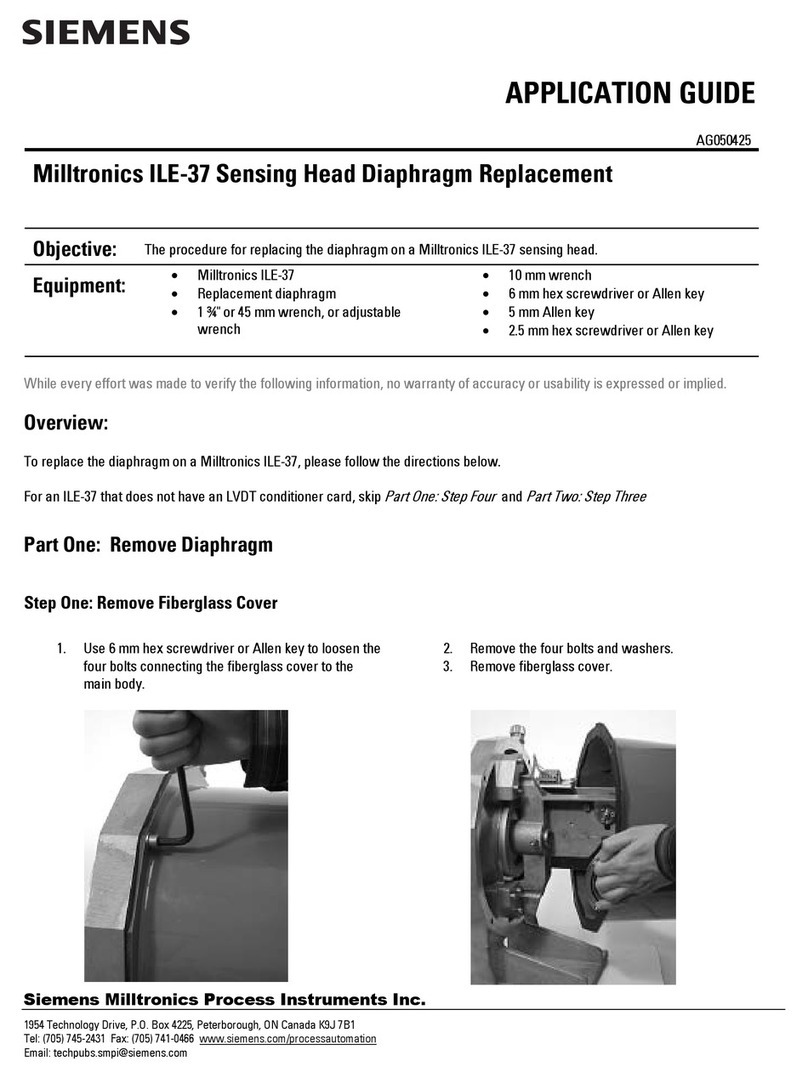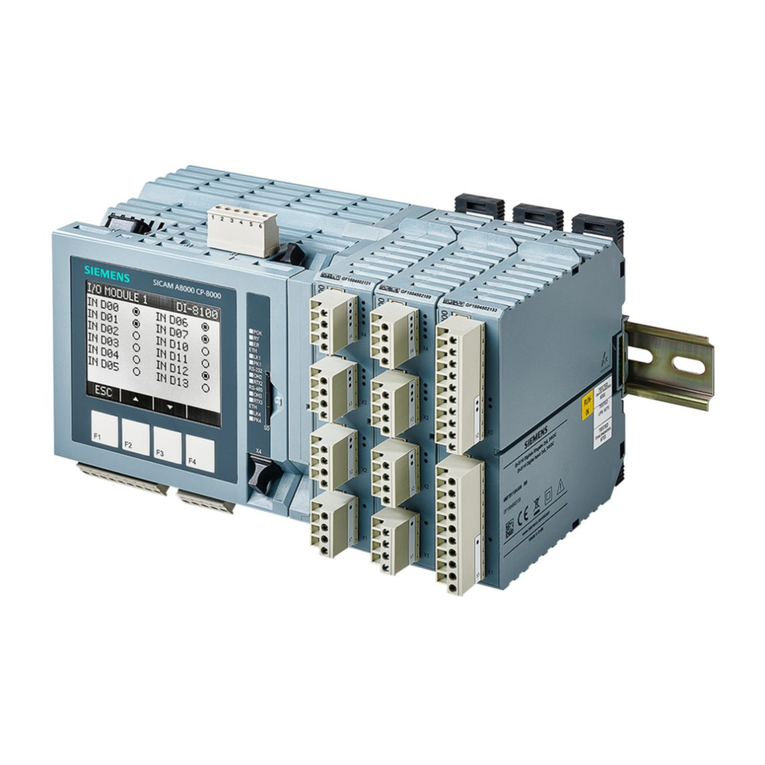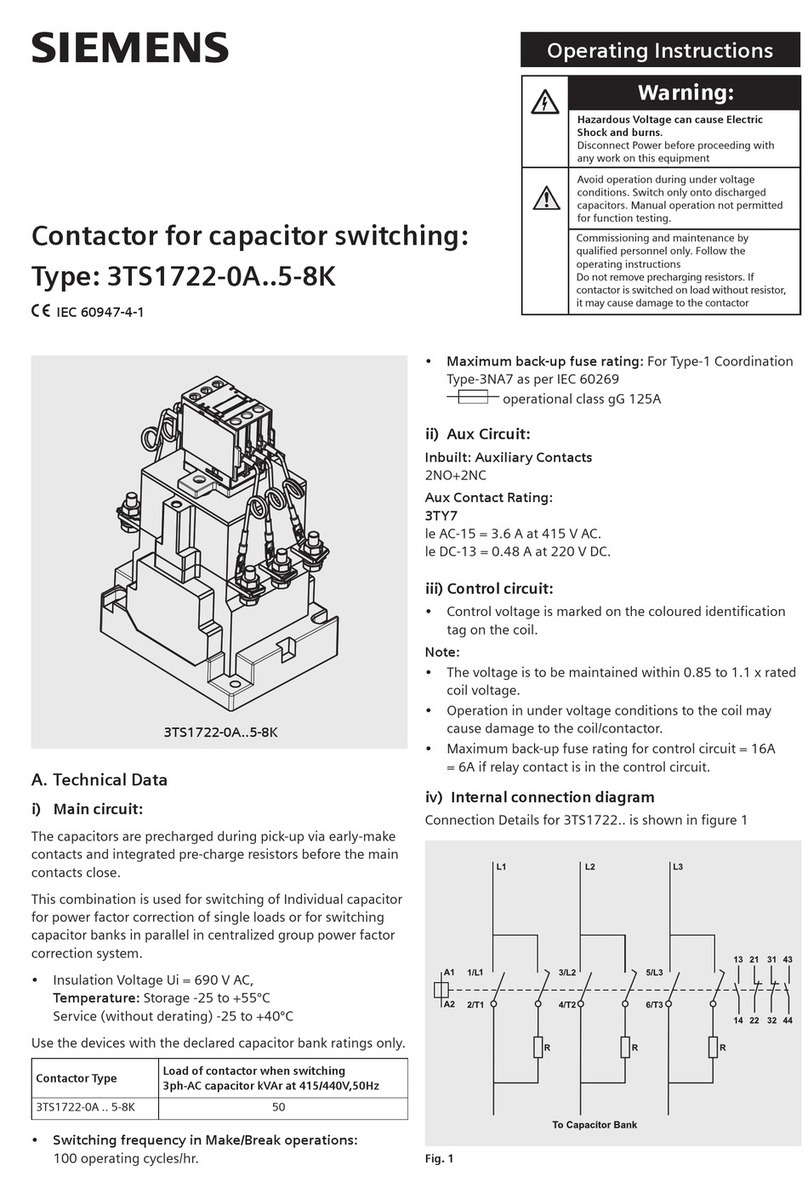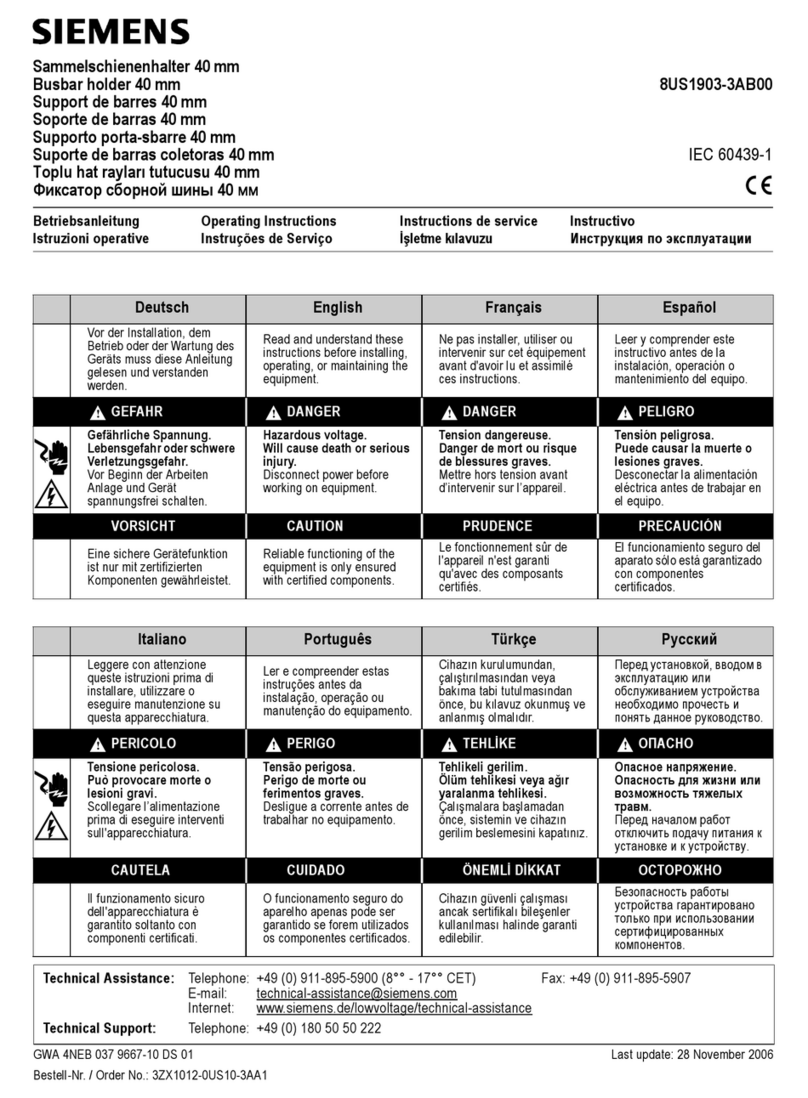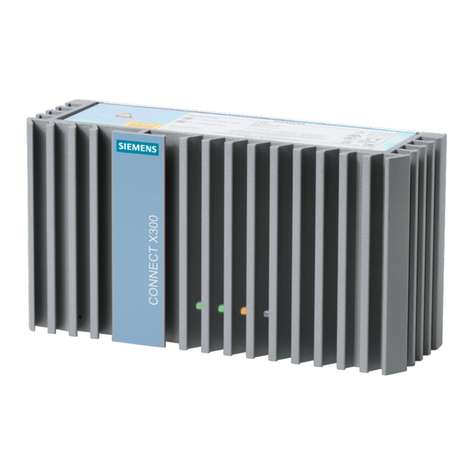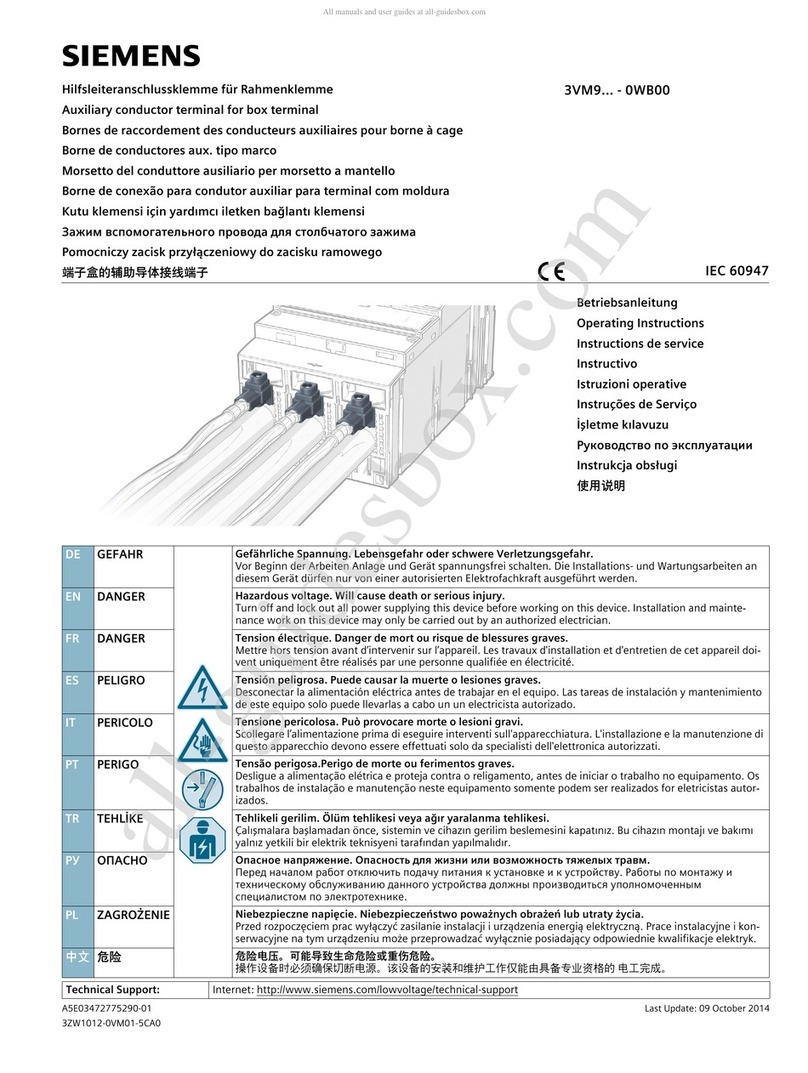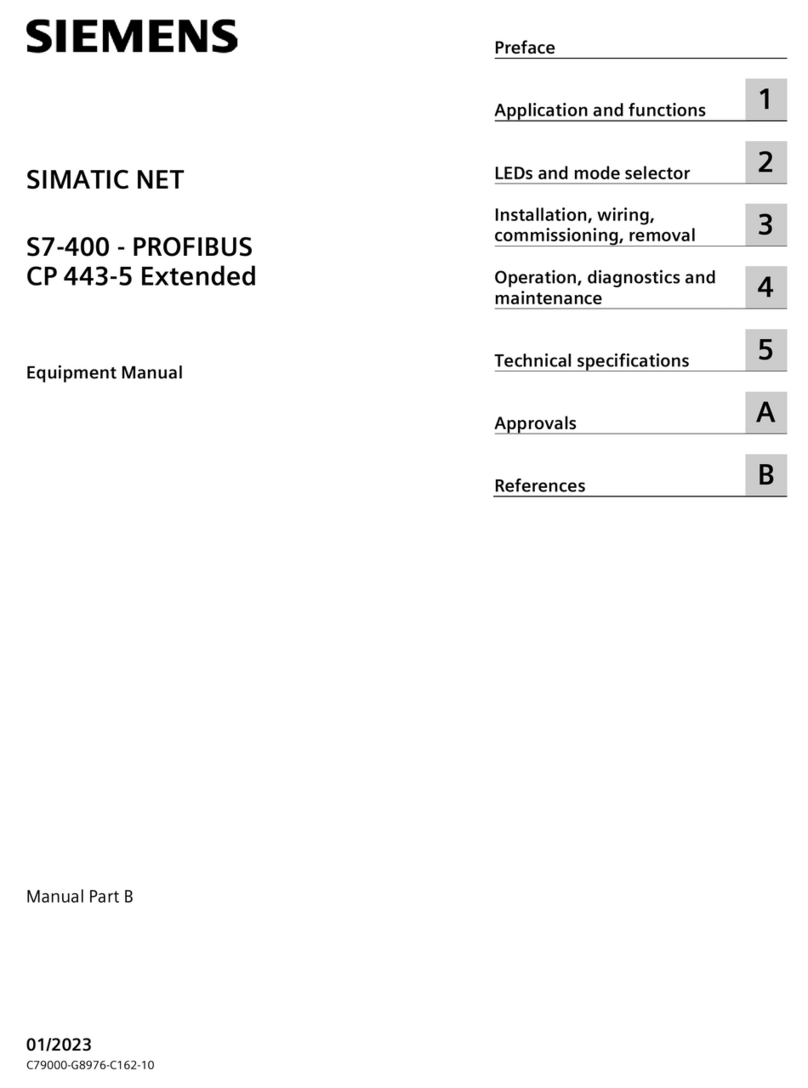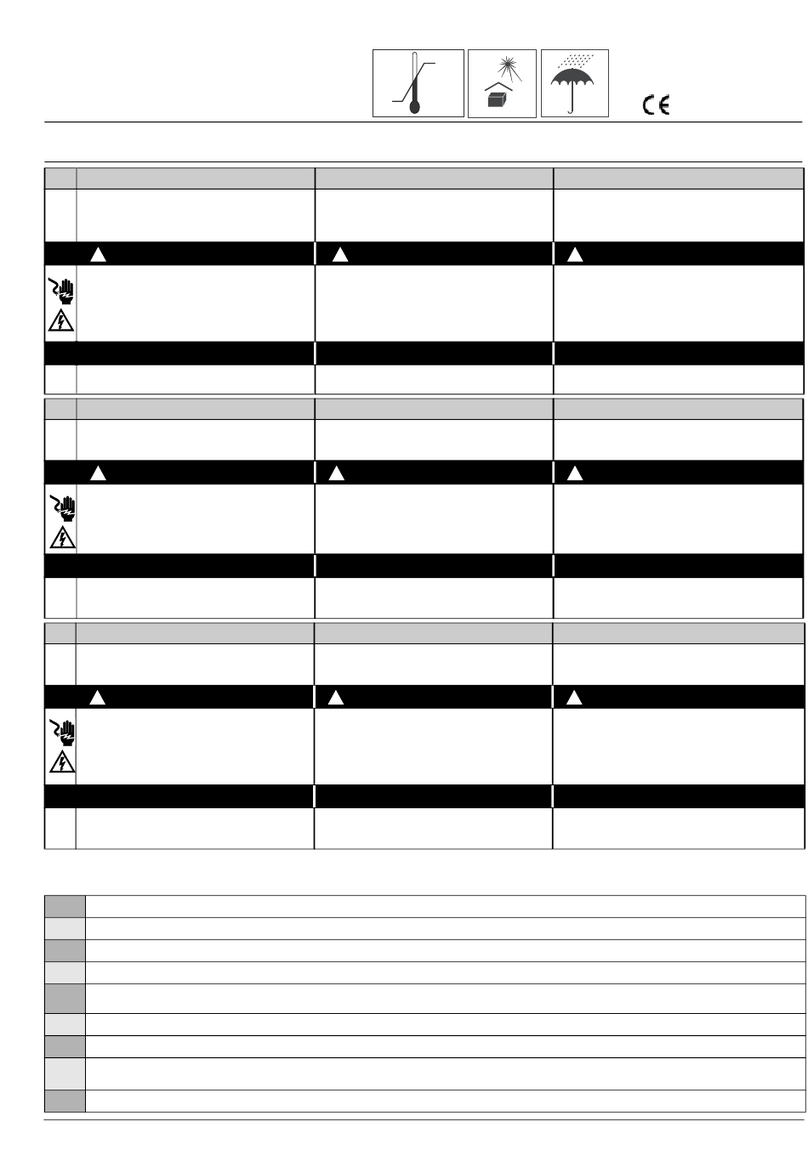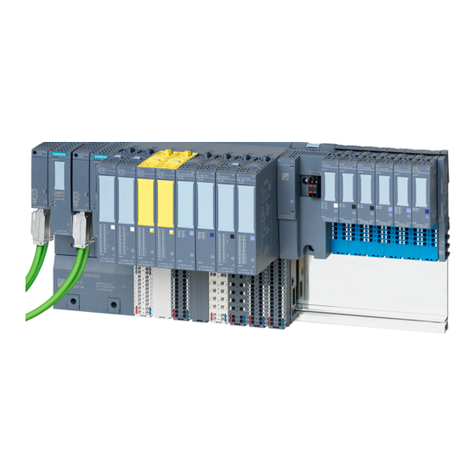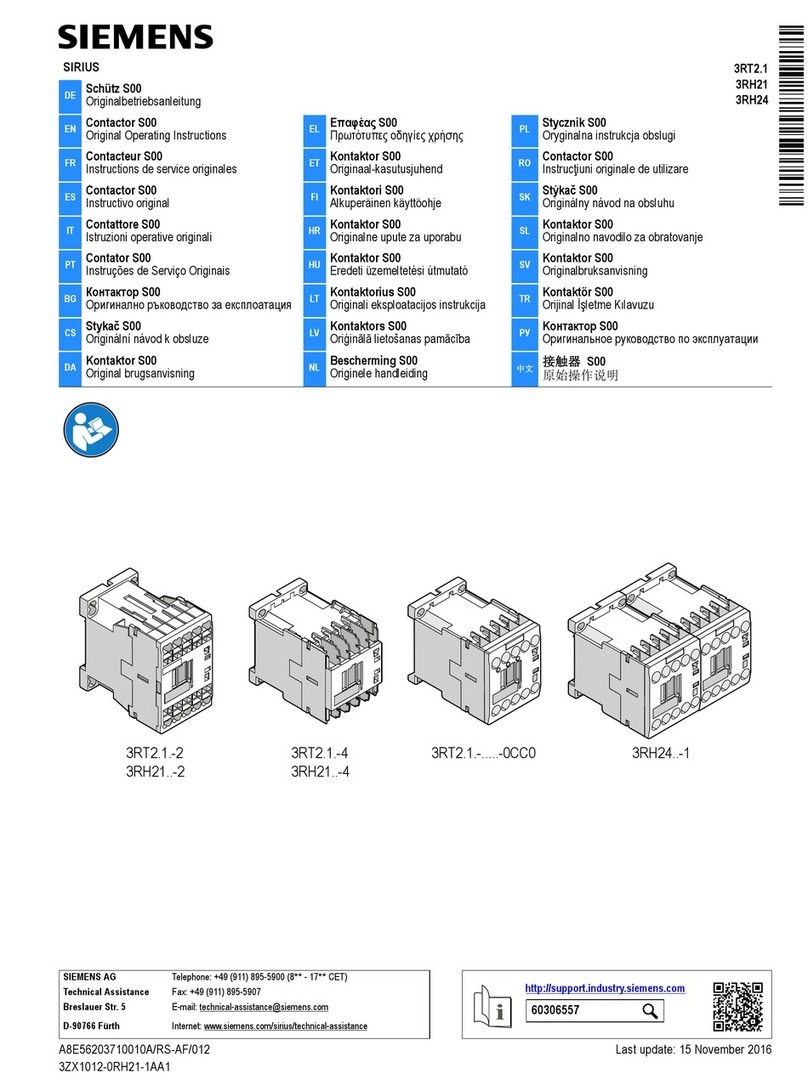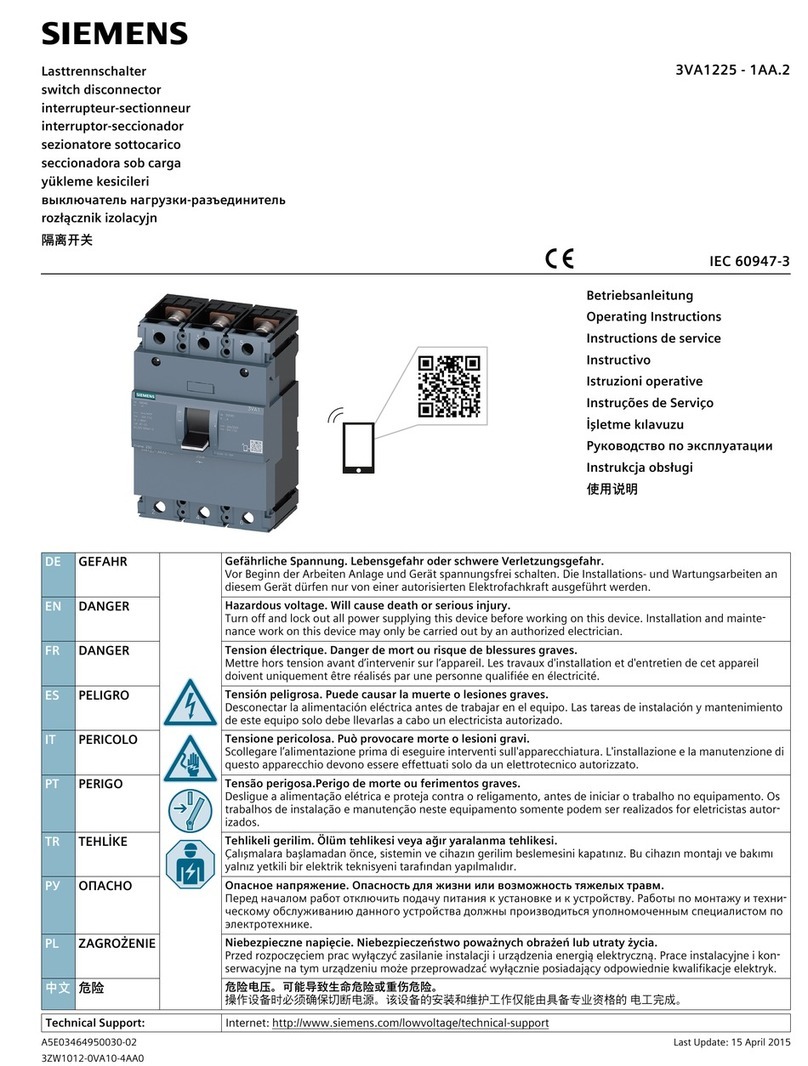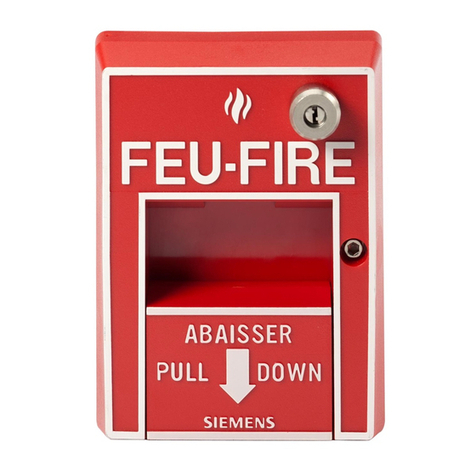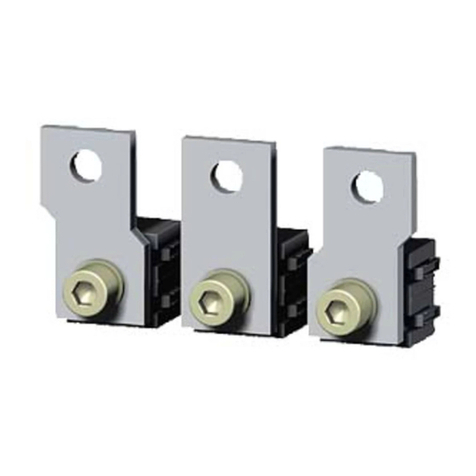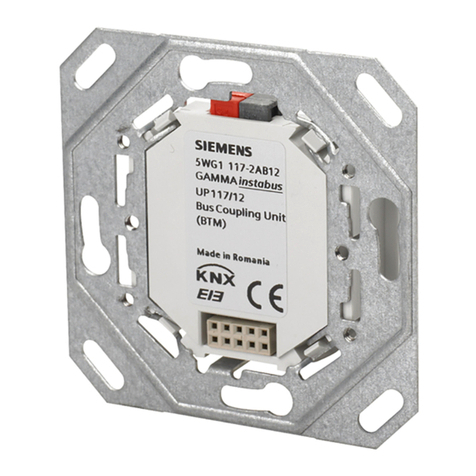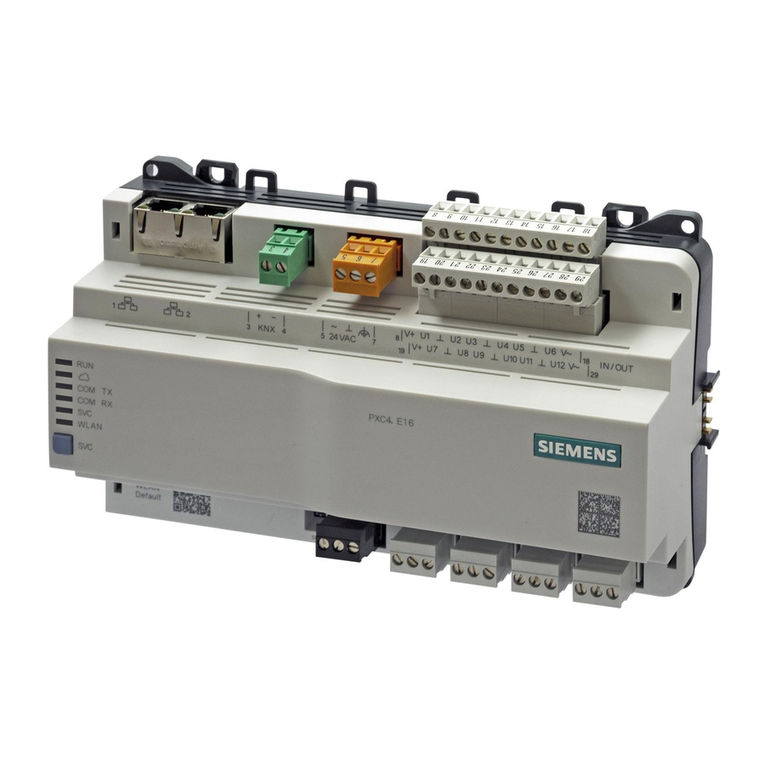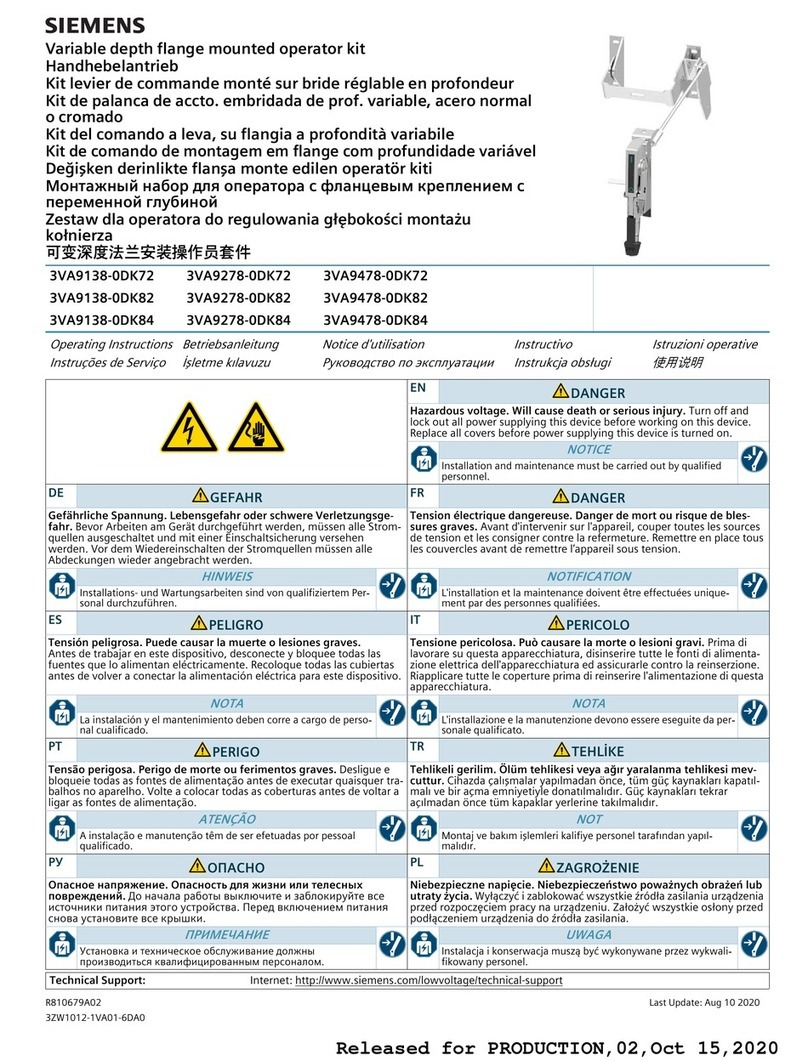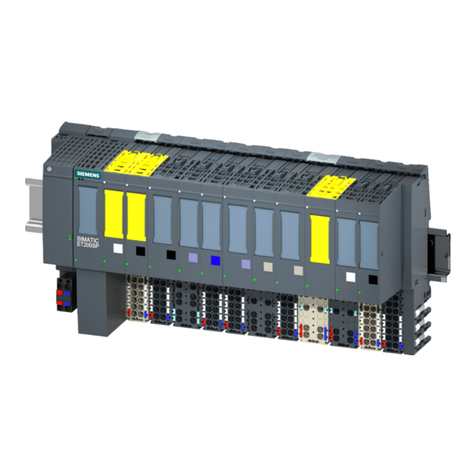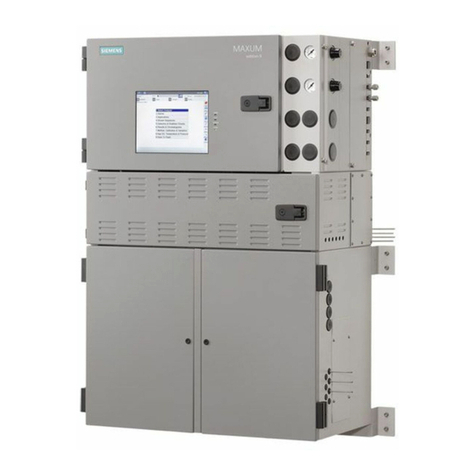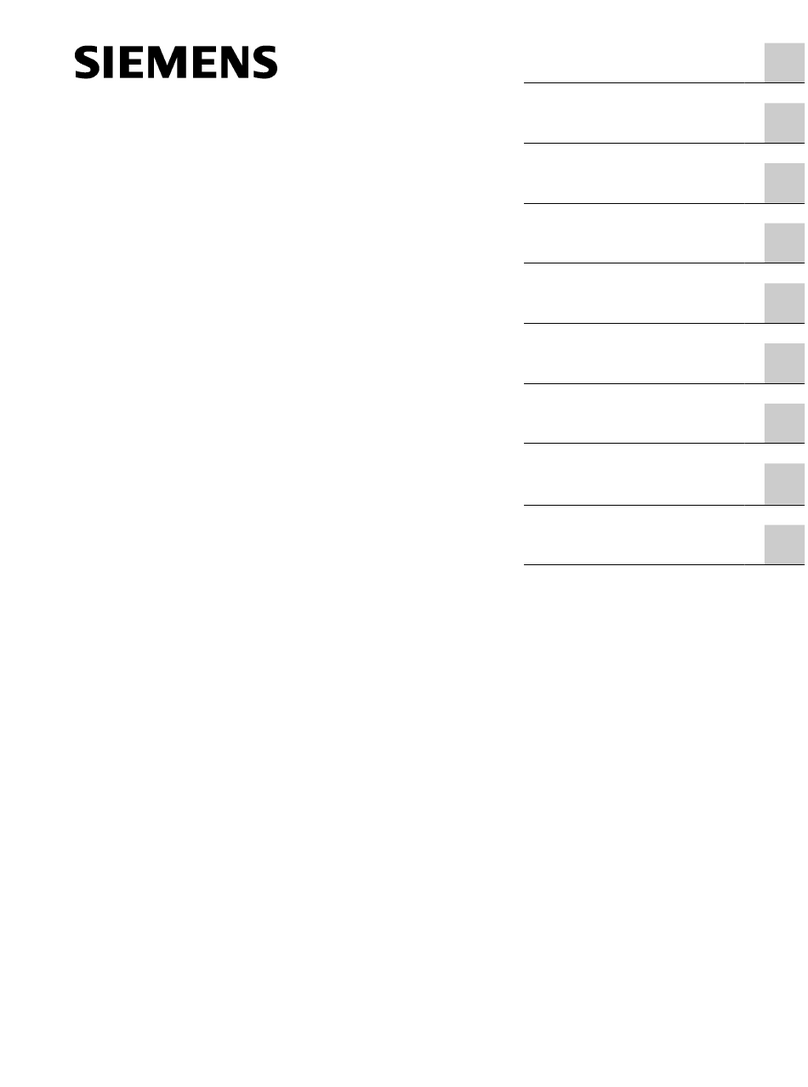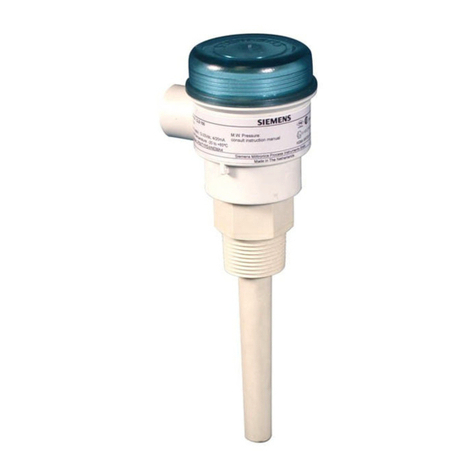
The following precautions should be taken when
moving an MCC with a forklift:
. Make sure the load is properly balanced on the
forks.
. Place protective material between the MCC and
forklift to prevent bending and scratching.
. Securely strap the MCC to the forklift to prevent
shifting or tipping.
. Excessive speeds and sudden starts, stops, and
turns must be avoided when handling the MCC.
. Lift the MCC only high enough to clear
obstructions on the floor.
. Take care to avoid collisions with structures, other
equipment,or personnel when moving the MCC.
. Never lift an MCC above an area where personnel
are located.
The following precautions should be taken when
moving an MCC by rolling on pipes:
. Use enough people and restraining devices to
prevent tipping.
. The surface over which the MCC is rolled must be
level, clean and free of obstructions. NEVER ROLL
AN MCC ON AN INCLINED SURFACE.
. It should be recognized that rolling an MCC is
especially hazardous to fingers, hands, and feet
and is susceptible to tipping. Measures should be
taken to eliminate these hazards.
. All pipes must be the same outside diameter and
should have no flat spots. Only steel pipe should
be used for this purpose.
Heavy equipment.
Can cause death or serious
personal injury.
Exercise extreme care when handling
the motor control center. Handle
upright only. Do not tilt. A crane or
hoist should be used if at all possible.
Exercise all safety pre-cautions
outlined in the following discussion.
. Skid removal
Skid removal should be performed just prior to
final placement of the motor control center and is
achieved by first removing the bottom horizontal
wireway covers which allows access to the skid lag
bolts. Attach crane rigging to lifting angle on top
of MCC structure. Apply sufficient tension on the
rigging to remove all slack without lifting the
equipment. This is a recommended safety measure
to reduce the possibility of tipping. The lag bolts may
now be removed, the MCC lifted, the skids removed,
the MCC lowered into place, and the anchor bolts
secured. The last operation should be performed
with adequate rigging tension to prevent tipping.
After all additional shipping sections are secured in
a similar manner, sections and bus bars should be
joined in accordance with the instructions in the
Installation section of this manual. Close doors
and reinstall covers as soon as possible to eliminate
intrusion of dirt and foreign materials into the
MCC enclosure.
. Storage
A motor control center or separate unit, which is
not installed and energized immediately, should
be stored in a clean dry space where a uniform
temperature prevents condensation. Preferably, it
should be stored in a heated building, with adequate
air circulation and protected from dirt and water.
Motor control centers and units should be stored
where they are not subject to mechanical damage.
If the motor control center is to be stored for any
length of time, prior to installation, restore the
packing for protection during that period. Where
conditions permit, leave the packing intact until the
motor control center or sections are at their final
installation position. If the packing is removed, cover
the top and openings of the equipment during the
construction period to protect them against dust
and debris.
If the equipment is to be stored in a cool or damp
area, do not completely cover the equipment, but
provide heat to prevent condensation of moisture
in the equipment. If the control center has been
ordered with space heaters, connect to a temporary
feed for heat. A simple method of heating the motor
control center when space heaters are not ordered is
to place a standard V/W lamp inside the bottom
of each vertical section.
An unenergized outdoor motor control center
should be kept dry internally by installing temporary
heating (see previous paragraphs), or by energizing
optional self-contained space heaters.
Any scratches or gouges suffered from shipping or
handling should be touched up to prevent rusting.
tiastar™ Motor Control Centers Instruction Manual Receiving and handling
